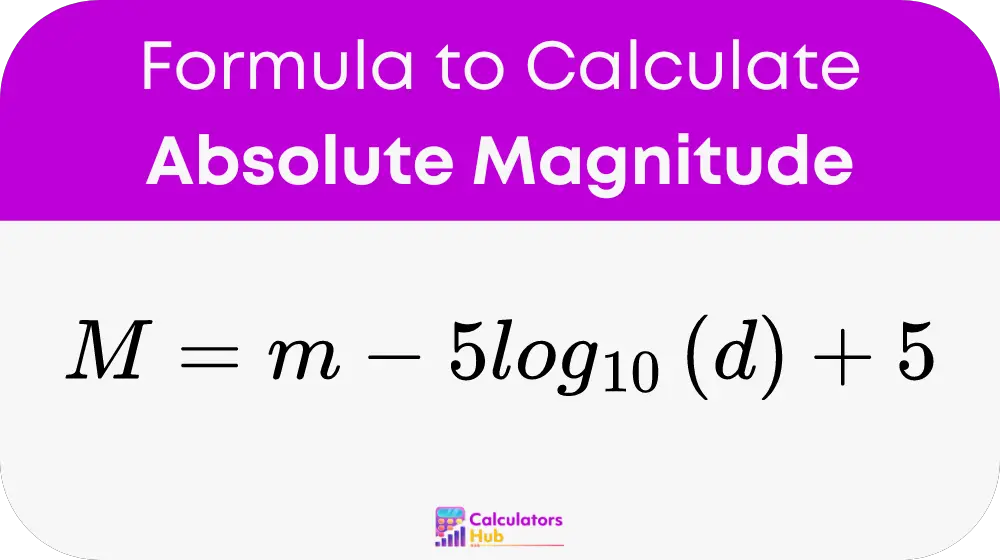The Absolute Magnitude Calculator computes the absolute magnitude (M) of a celestial object based on its apparent magnitude (m) and distance (d) from Earth. Absolute magnitude is a crucial concept in astronomy as it provides a way to understand the true luminosity of an object, independent of its distance.
Formula of Absolute Magnitude Calculator
The formula for calculating the absolute magnitude (M) of a celestial object is:

Where:
- M is the absolute magnitude.
- m is the apparent magnitude.
- d is the distance to the object in parsecs.
Steps to Use the Formula:
- Determine the apparent magnitude (m) of the object.
- Measure the distance (d) to the object in parsecs.
- Substitute the values into the formula to calculate the absolute magnitude (M).
Pre-calculated Values
Here is a table of some general terms that people search for, providing pre-calculated absolute magnitudes for common distances and apparent magnitudes.
| Apparent Magnitude (m) | Distance (parsecs) | Absolute Magnitude (M) |
|---|---|---|
| 0 | 10 | 0 |
| 1 | 10 | 1 |
| 2 | 10 | 2 |
| 3 | 10 | 3 |
| 4 | 10 | 4 |
| 5 | 10 | 5 |
| 6 | 10 | 6 |
| 0 | 100 | -5 |
| 1 | 100 | -4 |
| 2 | 100 | -3 |
| 3 | 100 | -2 |
| 4 | 100 | -1 |
| 5 | 100 | 0 |
| 6 | 100 | 1 |
This table provides a quick reference for users, allowing them to find the absolute magnitude without having to perform the calculation each time.
Example of Absolute Magnitude Calculato
Let's consider an example to illustrate how to use the Absolute Magnitude Calculator.
Example:
Suppose we have a star with an apparent magnitude (m) of 4 and it is located at a distance (d) of 50 parsecs from Earth. To find the absolute magnitude (M), we use the formula:
M = 4 - 5 * log10(50) + 5
First, calculate log10(50):
log10(50) is approximately 1.699
Next, substitute the values into the formula:
M = 4 - 5 * 1.699 + 5 M = 4 - 8.495 + 5 M = 0.505
Therefore, the absolute magnitude of the star is approximately 0.505.
Most Common FAQs
Apparent magnitude is the brightness of a celestial object as seen from Earth. It depends on the object's intrinsic brightness and its distance from Earth. Absolute magnitude, on the other hand, is the intrinsic brightness of the object, standardized to a distance of 10 parsecs. This allows for a direct comparison of the true luminosities of different objects.
Astronomers use various methods to measure the distance to celestial objects, such as parallax, standard candles (like Cepheid variables and supernovae), and redshift measurements. These techniques help determine the distance, which is essential for calculating the absolute magnitude.
Absolute magnitude is crucial because it allows astronomers to compare the true brightness of celestial objects, regardless of their distance from Earth. This helps in understanding the physical properties of stars and other astronomical objects, such as their size, composition, and energy output.